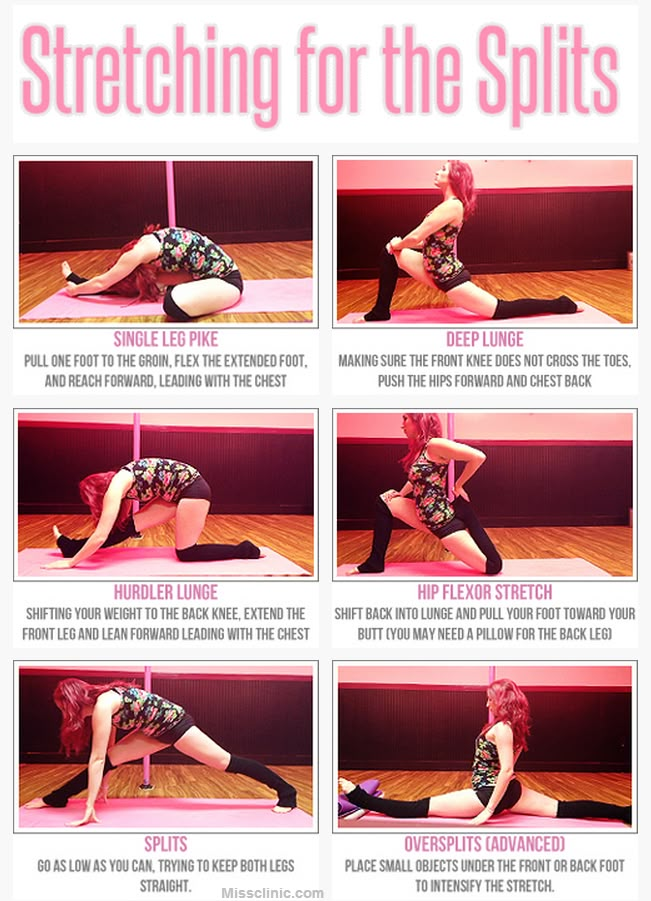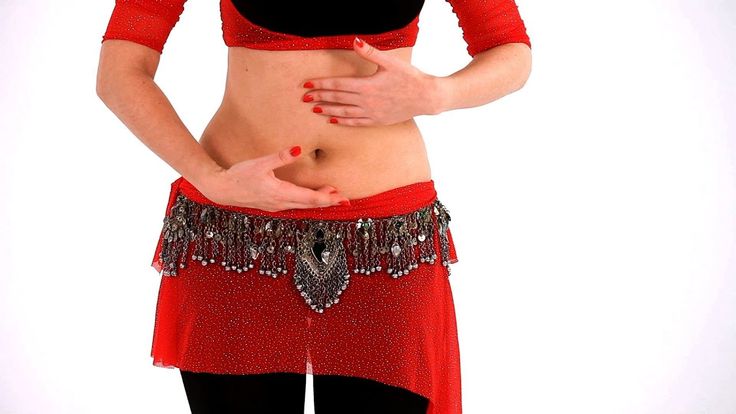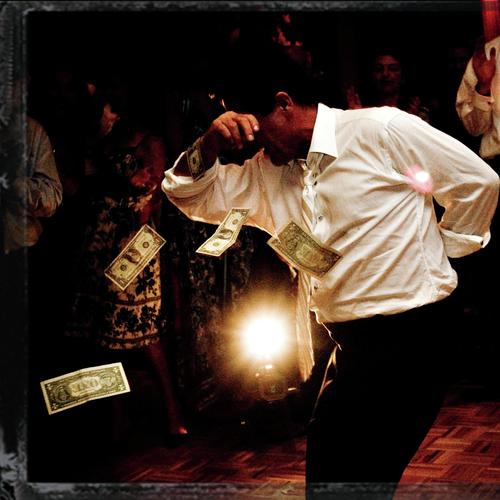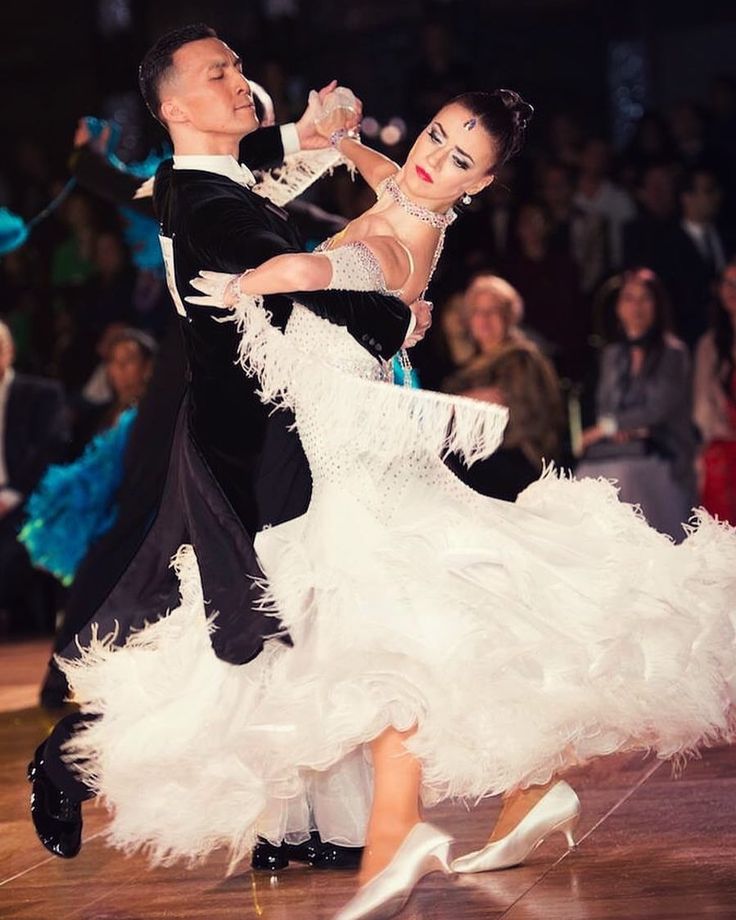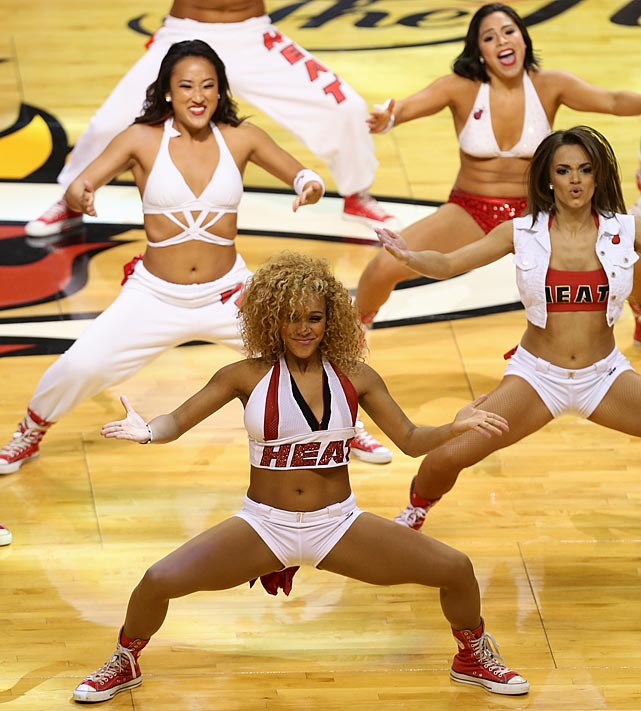How to stretch hip flexors for dancers
Dance Advice | Flexible Hips and Hip Flexors — A Dancer's Life
Tight hips and hip flexor muscles are a common complaint for dancers. When your hip flexors are tight they restrict your range of motion, particularly hip hyperextension, which is required for that beautiful arabesque line we all long for. But what are the hip flexors and how can we prevent tightness and restricted movement? The hip flexors are a collection of muscles around the top of the thighs and groin which connect the upper leg to the hip. These muscles allow you to raise your leg and bend at the waist. Some of the main hip flexor muscles are the rectus femoris, tensor fasciae latae, artorius and iliopsoas. Tightness of these muscles can be a result of gripping in the front of the leg or sitting for long periods of time. The tighter these muscles get, the less flexibility we have which can lead to pain and discomfort. To compensate for the restriction that occurs as a result of this tightness, dancers tend to rotate the pelvis incorrectly, which can lead to further injuries, including lower back pain.
Pigeon Pose
Commonly seen in yoga practices, this stretch can be used daily to improve mobility and flexibility of the hips and hip flexors.
Begin on your hands and knees in a table top position.
Bring your right knee forward and place it behind your right wrist. Then place your right ankle in front of your left hip.
Straighten your left leg behind you, making sure your left knee is straight and your toes are pointed.
Keeping your hips square, gently lower yourself to the ground.
Hold the stretch for 15-30 seconds.
If you’re comfortable with this you can lean the upper body forward over the bent leg to enhance the stretch, arms stretched in front of the leg.
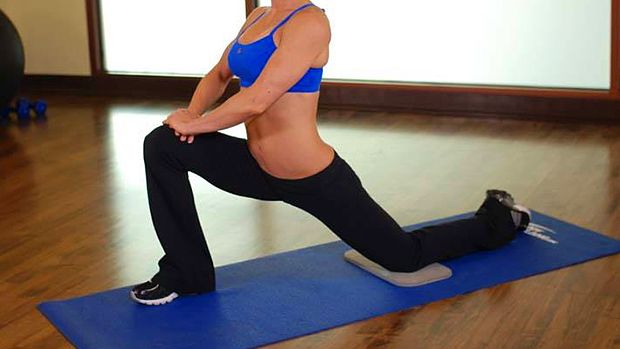 Hold for another 30 seconds.
Hold for another 30 seconds. Release the position by pushing up on your hands, lifting your hips and moving the legs back to the starting position on all fours. Repeat on the other side.
Kneeling Hip Flexor Stretch
This stretch can be performed daily with the intensity increasing each time you perform the exercise.
Kneel on your right knee.
Place your left foot on the floor in front of you at a 90º angle.
Straighten your upper body and place both of your hands on your left knee.
Extended your right leg behind you with your knee and top of the foot resting on the ground.
Drive your right hip forward to slightly deepen the stretch. Ensure to keep your core engaged and back straight.
Hold for 30 seconds then release. Repeat on the other side.
Static Hip Flexor Stretch
Best performed when your muscles are warm this stretch lengthens out the hip flexor muscles.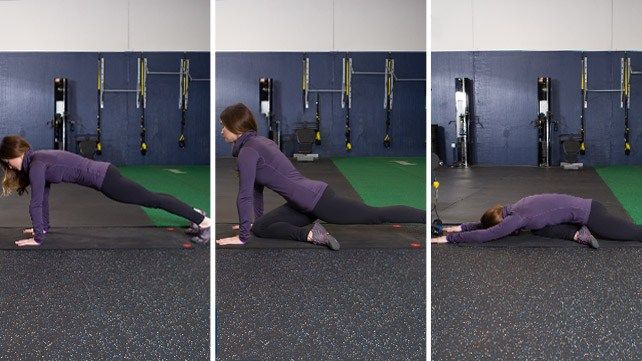
Kneeling on your right knee, place your left foot on the floor in front of you at a 90º angle.
Leaning forward, place your hands either side of the left foot .
Lift the back knee off the ground so you’re in a lunge position, maintaining a 90º angle with the front leg.
Hold the stretch for 15-30 seconds and then repeat on the other leg.
Butterfly Stretch
This is a great exercise to perform after sitting down for long periods of time or as part of your warm up or cool down.
Sit on the floor with both legs straight out in front of you.
Bring the soles of the feet together, moving your heels as close to the body as you can.
Lean your body forward over the feet with a straight back.
You can also push on your thighs with your elbows for a deeper stretch.
 Hold for 30 seconds.
Hold for 30 seconds.
Sitting Glute & Hip Stretch
The perfect exercise to do when you are watching TV, sitting at a desk or as part of your warm up/cool down.
Sit on a chair with your back straight.
Place your right ankle on your left knee.
Fold your torso forward until you feel a gentle stretch.
You can enhance the stretch by pushing down on the right knee with your right elbow as you’re leaning forward.
Hold for 60 seconds and then repeat on the other side.
If you feel your hips may need a little extra love, you can also incorporate the use of a foam roller or tennis ball into your warm up or cool down routine to assist with loosening the hip flexor muscles and surrounding muscles.
Emily wears the Lara Endurance Jacket, Dylan Legging and Neoprene Jazz Boot all in Black.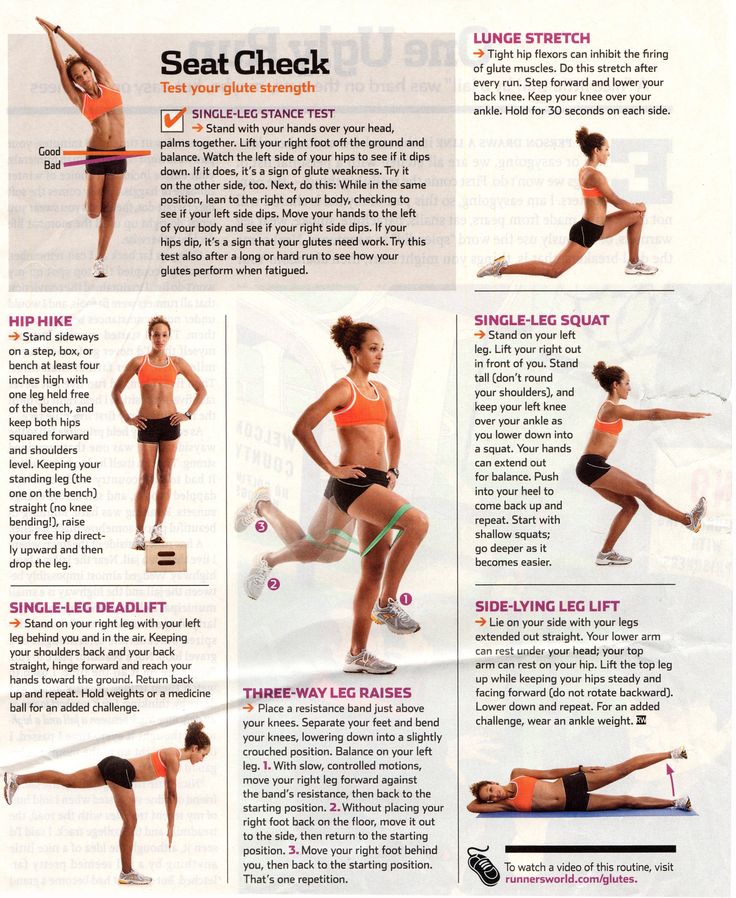
Hip flexibility and mobility is something that needs consistent work and attention. Some people will naturally have tighter hip flexors than others but that doesn’t mean they can’t also have flexible hips too. With regular stretching you’ll gradually start to see an improvement in your hip flexibility and strength which will flow into your dance ability.
For further tips and exercises to improve your flexibility and technique have a look at our Theraband Exercises for Dancers and Improving your Core Strength blogs.
Article by Sheree Ronai-Horvath
Photography by Elly Ford
Read More:
Thera-band Exercises for Dancers
So you want to be flexible…
Dance 101: Improving Your Core Strength
Dance Advice, Fitness, Health + FitnessEnergetikship flexor stretch, Hip flexor, Hips, flexibility, Dance Advice, exercises, Sheree Ronai-Horvath, Elly FordComment
0 LikesHip Opening Stretches for Ballet Dancers — Ballet Fusion
Most ballet exercises are done with turned out legs and feet.
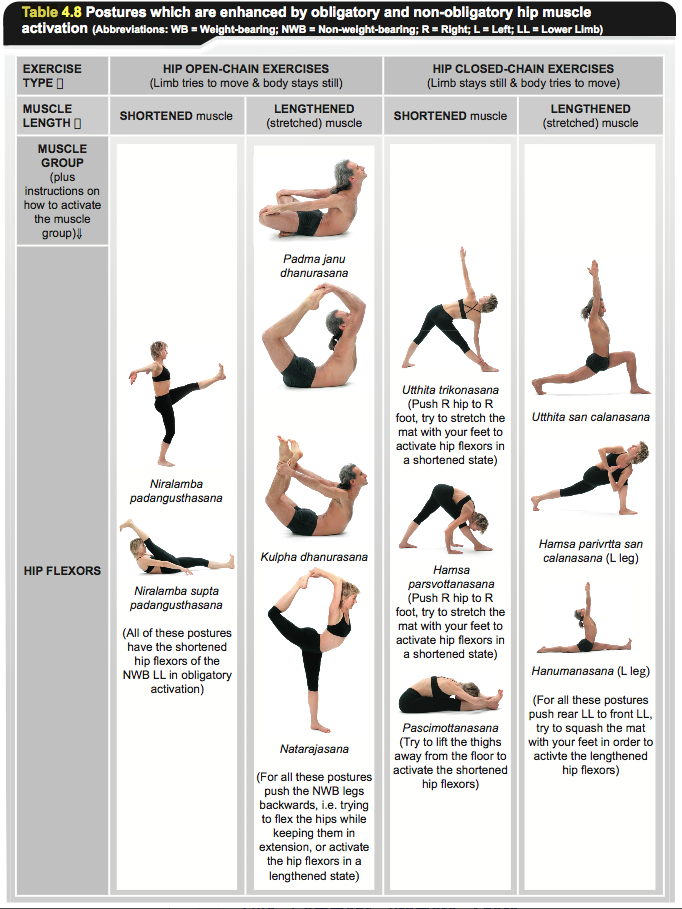 Having open, flexible hips is key to achieving a good turnout. High leg lifts and extensions such as grand battement, arabesques and grand jetes also rely on good hip flexibility.
Having open, flexible hips is key to achieving a good turnout. High leg lifts and extensions such as grand battement, arabesques and grand jetes also rely on good hip flexibility.We get lots of questions in class about hip opening stretches so we’ve pulled a few of our faves together.
Make sure you are warm before you try any of these exercises. All stretches are best done post-workout when your muscles are warm. Aid recovery by sleeping well and eating a varied and balanced diet.
Down-facing Frog
This exercise is a classic amongst ballet dancers. Not easy at first but with regular practice, this is one of the best hip opening exercises out there.
You can do this with the soles of the feet pushed together or with feet and legs out to the side - more commonly seen in yoga practice.
Lie face down on the floor with legs straight.
Being careful to support your shoulders, bring the soles of your feet together and push your knees out to the side.

At first, your butt will raise and you might find that your feet won’t stay on the floor.
The goal is to gently pull your stomach and pelvis back towards the floor - easing the knees out to the side.
With regular practice, your hips will start to open more and this will become easier.
Top Tip: Do this on the carpet whilst watching TV.
Down facing leg side stretch
Not the easiest stretch but this will come with practice and is great for hip and hamstring flexibility.
Lie face down on the floor with legs straight.
Gently slide your right leg along the floor to the side and up towards your waist level. Bring your right arm along and down to meet your foot.
Hold this position for as long as possible.
Be careful not to create tension in your neck as you do this and stop if you feel any knee discomfort in the bent leg.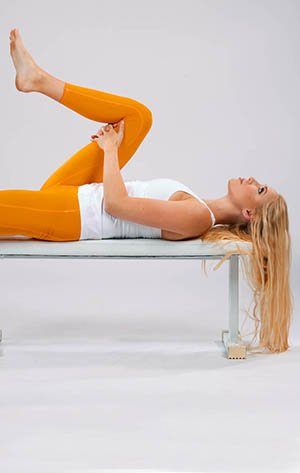
Repeat with the other leg and arm.
Standing lunge
A simple stretch which will improve rapidly with practice.
Stand with one foot in front of the other.
Bend the front knee.
Do this with as much space between the front and back leg as possible. Don’t let your knee sit over your toes. If it does, move your front foot further forward or push your back foot further back.
Low lunge (continuation of standing lunge)
This is a great stretch for the front hip flexors.
Follow the steps above for the Standing Lunge stretch.
Once in position, lower the back knee to the floor.
To add another step to this exercise - grab the back foot and pull towards your butt for a quad stretch.
Top tip: Use a mat to protect your back knee if you are on a hard floor surface.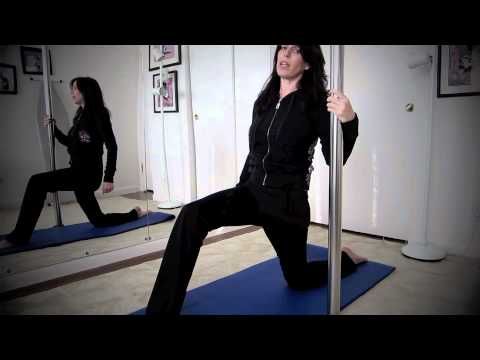
Open lizard
This is a well known yoga pose and one that you shouldn’t do unless muscles are very well warmed up.
Stand with one foot in front of the other.
Bend the front knee and lower as much as possible. Do this with as much space between the front and back leg as possible. Don’t let your knee sit over your toes. If it does, move your front foot further forward or push your back foot further back.
Gently lower the back knee to the floor.
Place both hands inside your front leg.
Roll gently onto the outside of the front foot - pushing the knee out and down towards the floor.
To add a level, lower on to your front arms and push your chest down towards the floor.
Breathe slowly and hold for 10 to 15 seconds,
Seated butterfly
Sitting upright on the floor.
 Bend knees and push them out and down towards the floor, keeping the soles of the feet together.
Bend knees and push them out and down towards the floor, keeping the soles of the feet together.
Option 1: Lean back with hands on the floor behind you, with the feeling of pushing your knees down as you hold the position.
Option 2: Lean forwards over your feet with the feeling of pushing your knees down as you hold the position.
Pigeon pose
Sitting upright on the floor, bring one leg across (as if you were about to cross your legs).
Flex the front foot slightly.
Gently manoeuvre the other leg back until it is parallel behind and underneath you.
Once in position, gently lower your chest down towards the floor as far as you can.
Breathe through this position and hold for 10 to 15 seconds on each side.
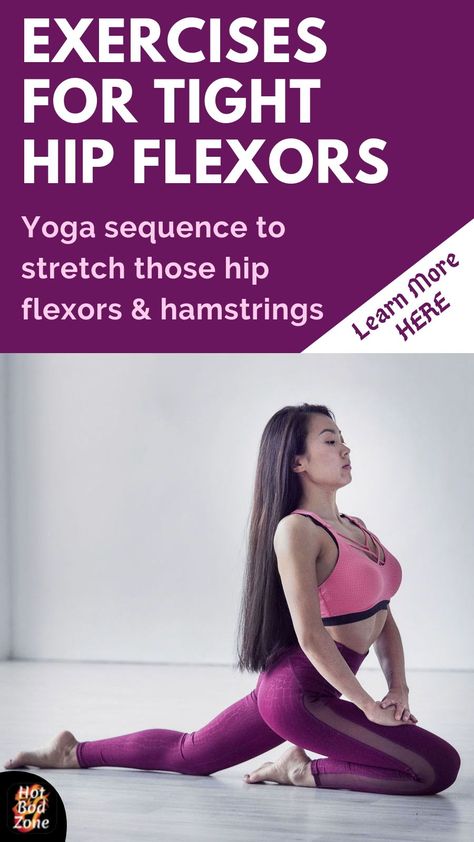
Barre hip rotator
Do this exercise slowly and only after a workout when your muscles are very warm.
Standing sideways to the barre bring your outside leg up, bending the knee into the chest.
Hold the knee with your hand and gently guide it out to the side, trying to keep it above waist height.
Continue to guide the knee back, moving into attitude position as high as possible.
Hold here for 5 seconds and drop the leg gently.
Ballet Fusion
0 LikesClimbing Yoga Series: How to Stretch Your Hip Flexors
Climbing Yoga Series: How to Stretch Your Hip Flexors
As part of our yoga series, we regularly present yoga exercises adapted to the needs of climbers. The exercises will be presented by Behley Bergsport and Petra Zink.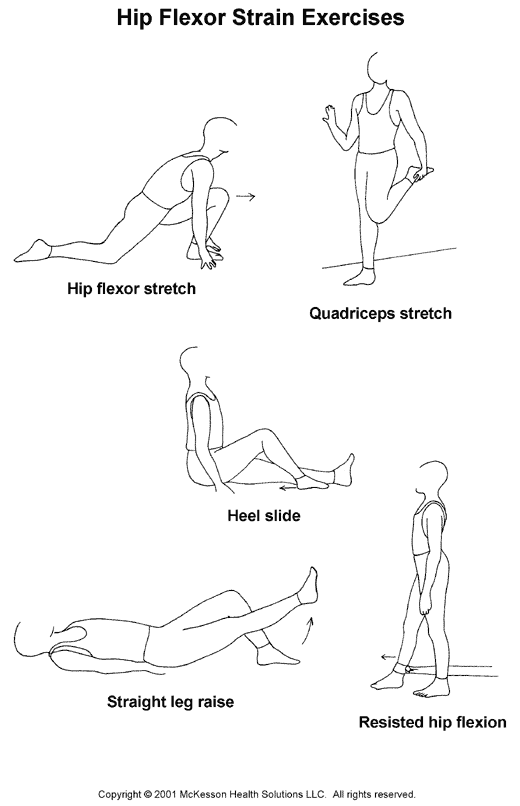 In today's episode, Petra will show you how you will stretch your hip flexors with the lunge.
In today's episode, Petra will show you how you will stretch your hip flexors with the lunge.
A large number of muscles are pulled on the hip joint, excessive tension of which can cause blockage and restriction of movement in the pelvis, lower back and legs. Since the thigh area is where our excretory organs and sexual organs are located, there is a lot of internal tension in this area. Also, the amount of time we spend in a virtually unnatural sitting position is not meant for our bodies.
The following exercise stretches the corresponding muscles and deeply massages the hip joints. And when the hip joint is free, you can climb high and far.
This pose stretches the hip flexors. The side-opening version of the lunge (below) opens the hips especially deep.
- Starting position: quadrupedal
- If necessary, place a blanket under the rear knee.
- Raise your torso while inhaling.
- Raise your hands as you inhale.
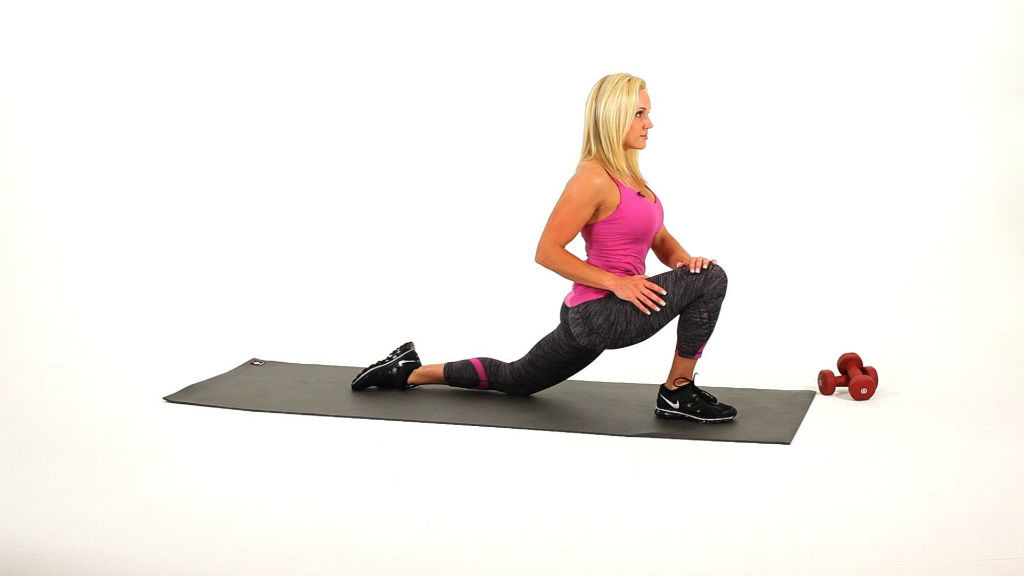
- At the end, as you exhale, lower your arms and return your leg to the quadruped.
- Duration: 5-7 breaths per position and leg.
- End position: child position
- Caution: for acute complaints in the hip and knee joints, as well as in the lower back.
Starting position: quadrupedal
1st position
2nd position
3rd position
Ending position
Ending position of child's poseOption: lunge with lateral opening This
especially opens the hips deeply.- Starting position: lunge position 1
- If necessary, make a fist with the supported hand.
- At the end, as you exhale, lower your arm and push your leg back into the quadruped.
- Duration: 7-10 breaths per side.
- Ending position: child's pose
Position
1st position
Ending position
Highlanders body parts: wrists, shoulders, back, hips.
Buy Now
German and Austrian readers can order the book here.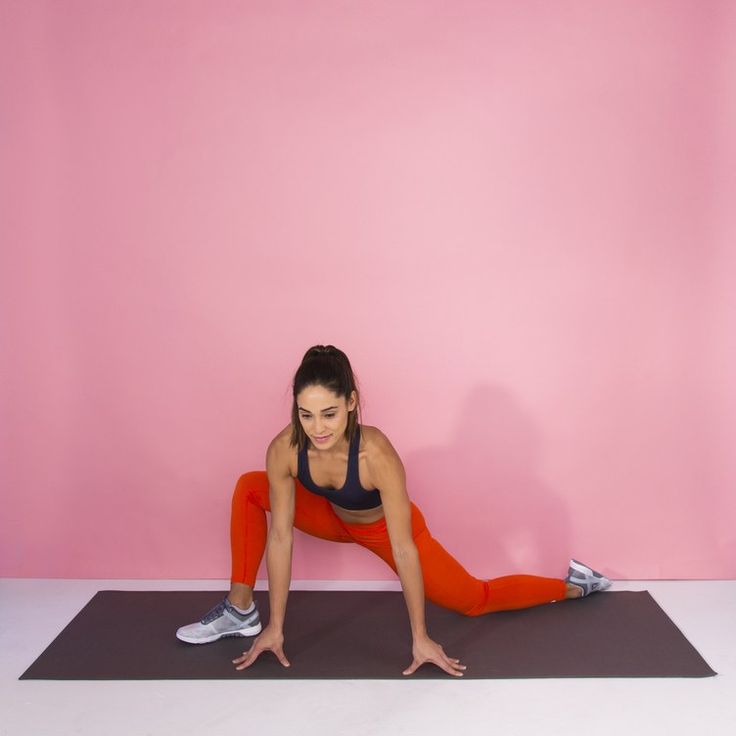
All articles in yoga series
You can find all articles in yoga series at the following link.
More info
You might be interested
- This is Jakob Schubert's practice wall in the garden.
- Best Practice Upper Body Workout
- Fascia Workout for Climb Recovery
About Piotr Zink
Petra Zink is a yoga teacher and sports scientist. She herself was an athlete and prepared young athletes for Olympic champions. She currently develops exercise and health concepts for tourism and business with a focus on yoga, health and mindfulness.
She shares her great passion for the mountains with her husband in her adopted home in Carinthia and travels throughout Europe and North America. Combining yoga and mountain sports is becoming more and more of an attitude, she shares her passion and knowledge in numerous yoga workshops and retreats (www.petrazink.com).
+++
Credits: cover Stefan Kechel
Set of Exercises: Hip Flexor Stretch
- Home
- »
- Blog
- »
- Workout Complex: Hip Flexor Stretch
Everyone who practices any kind of physical activity faces various fitness issues that need to be addressed. Whether it's an intermittent fasting technique, a hard training technique, or techniques to increase your running speed.
Along with the above, one of the most common problems is chronically “clogged” hip flexors. Quite a lot of people complain that they do not know how to stretch these muscles, avoiding lower back pain. Therefore, today we will talk in general about the approach to increasing the elasticity of the hip flexors and about special exercises for this muscle group.
Let's start with the typical mistakes that are most often made when stretching the hip flexors. The first of these is to resort to stretching these muscles very often in the hope of getting a satisfactory result.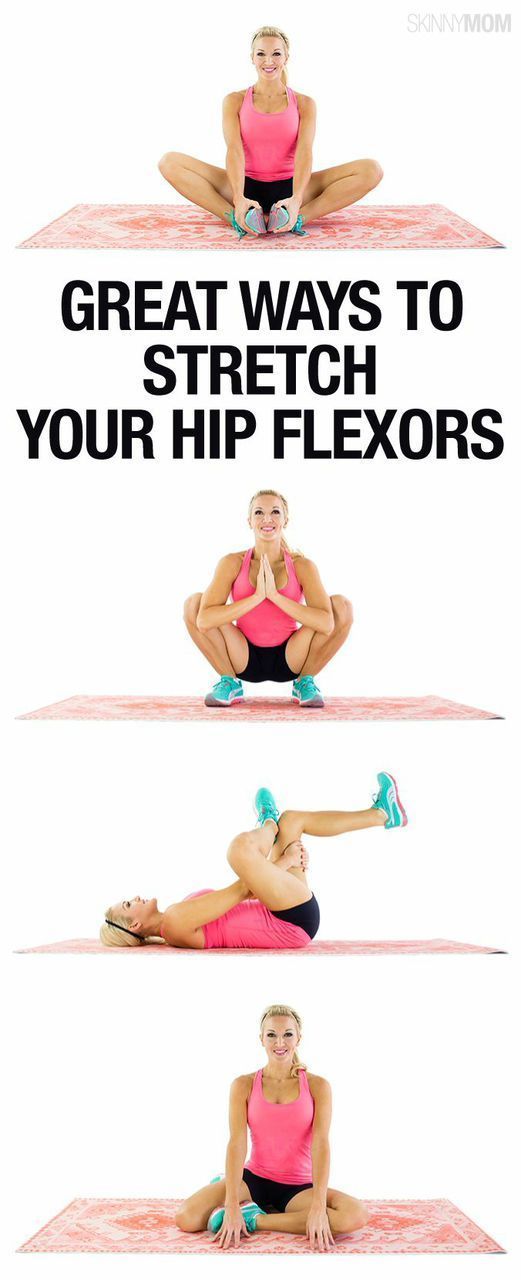 Another trick that doesn't quite work is spending more time stretching your hip flexors, trying to make progress on stretching stiff, stubborn muscles.
Another trick that doesn't quite work is spending more time stretching your hip flexors, trying to make progress on stretching stiff, stubborn muscles.
Both the first and the second method will most likely not lead to the desired indicators. And this is explained by the complexity of the anatomical structure of the hip flexors, which requires more jewelry work when stretching this muscle group.
Functional Structure of the Hip Flexors
The main components of the hip flexors are the iliacus, psoas, sartorius and rectus femoris. The iliacus muscle is attached to the top of the femur and starts on the inside of the iliac crest (on the inside of the pelvis). The psoas muscle is attached to the ends of the transverse processes of the lumbar vertebrae, holding the vertebral discs in a straight position.
The rectus femoris begins at the base of the anterior superior iliac spine and runs down to the kneecap. While the sartorius muscle starts in the same place as the rectus femoris, but runs along the medial side of the knee, intertwining with the hamstrings.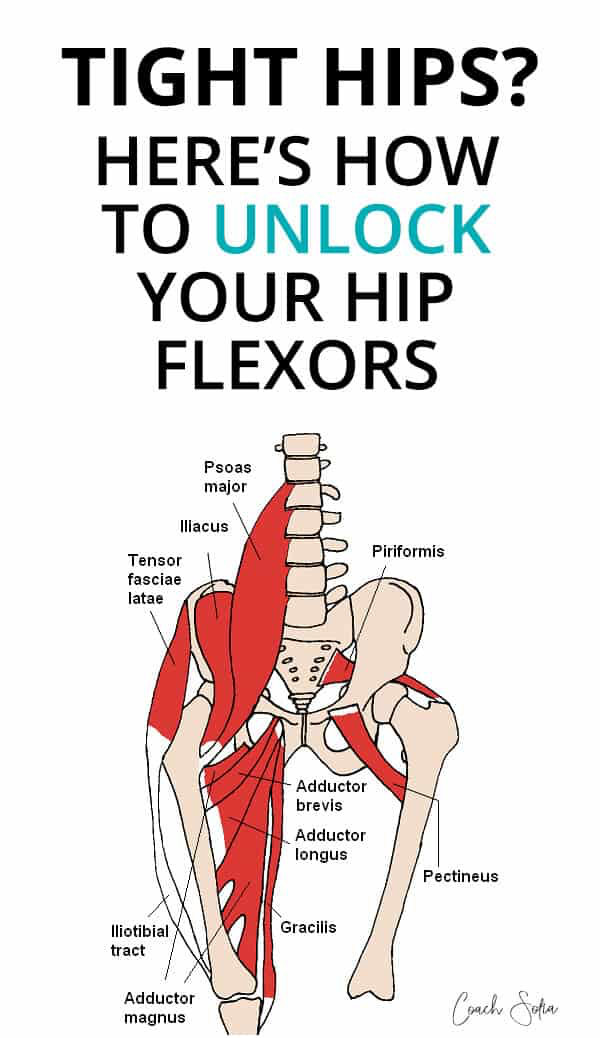
You can observe the work of the muscles of the hip flexor group by bending the leg at the knee in weight. When the legs are in contact with the ground, for example, when walking, the hip flexors work a little differently. And an indicator of the coherence and correctness of this work is the degree of anterior pelvic tilt (deflection in the spine).
Again, it's about anatomy. Thus, the iliac muscle keeps the spine from excessive flexibility, provides lateral flexion of the spine and is involved in various back and forth movements of the back. Thus, the iliac muscle is a significant factor in stabilizing the spine and the entire lumbar region.
The psoas muscle performs a similar function. It has extremely important fascial networks (namely, the medial ligaments), which are attached at one end to the pelvic floor, and at the other directly to the diaphragm. By the way, this is one of the reasons why it is so important to maintain proper breathing technique while doing hip flexor stretches.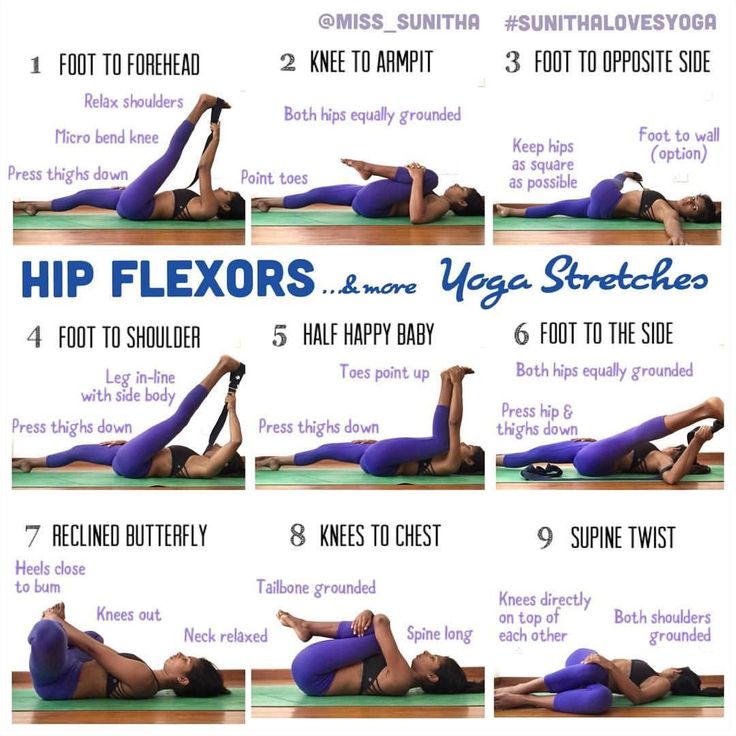
Thus, the psoas also plays a special role in stabilizing the back. Everyone who was not lucky enough to ever get an injury to the lower back could feel for himself the importance of the normal functioning of this muscle.
We conclude from this that stretching chronically inelastic, tight hip flexors will not, by itself, solve the problem. It is important to apply a whole range of exercises that help strengthen and stabilize the spine and develop the press (abdominal muscles).
Hip Flexor Stretch Exercises
- Isometric balance with resistance band.
The hip flexor stretch must be approached very carefully. First, it should be taken into account that these muscles can remain stiff, causing excessive forward pelvic tilt. In this case, diligent stretching of the hip flexors can cause the muscles to become short again very quickly and return to their previous position. And this threatens with new pains in the lower back.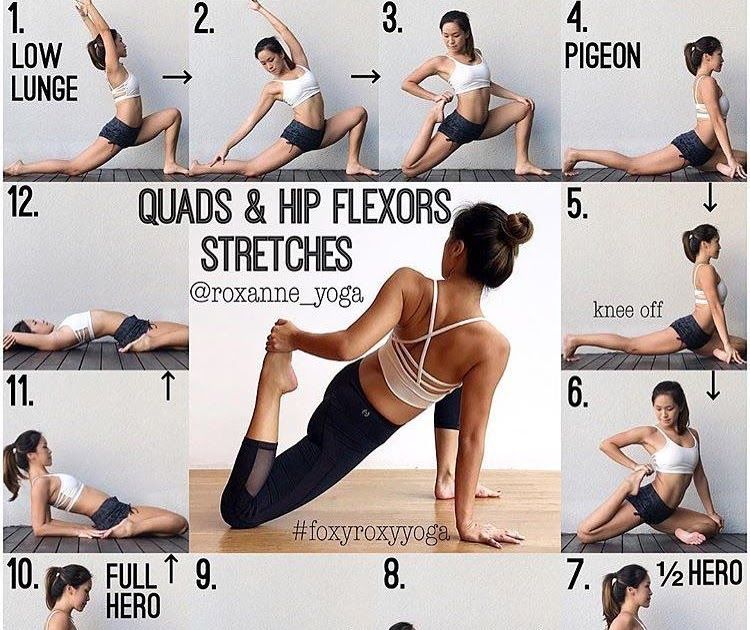
When performing the proposed exercise with an expander, the ability to fix the spine in a straight position is trained. This is not an exercise for the muscles of the shoulders, so arm movements are not provided here. All that is needed is to keep the expander taut for the maximum amount of time while maintaining the technique.
- Planck.
Having a strong abs is another important aspect. The fact is that a weak press can lead to serious dysfunctions in the work of the hip flexors. A weakened press is not only an inability to do a sufficient number of twists, it is also a threat to the loss of stability in the position of the spine.
When performing the first two exercises, it is highly desirable to stretch the muscles under load to the limit. Try to achieve a position in which you feel the hip flexors (especially the rectus femoris) very clearly. The tension and effort during execution must be serious. Ideally, within a few minutes after completing the exercises, you will walk with difficulty 🙂.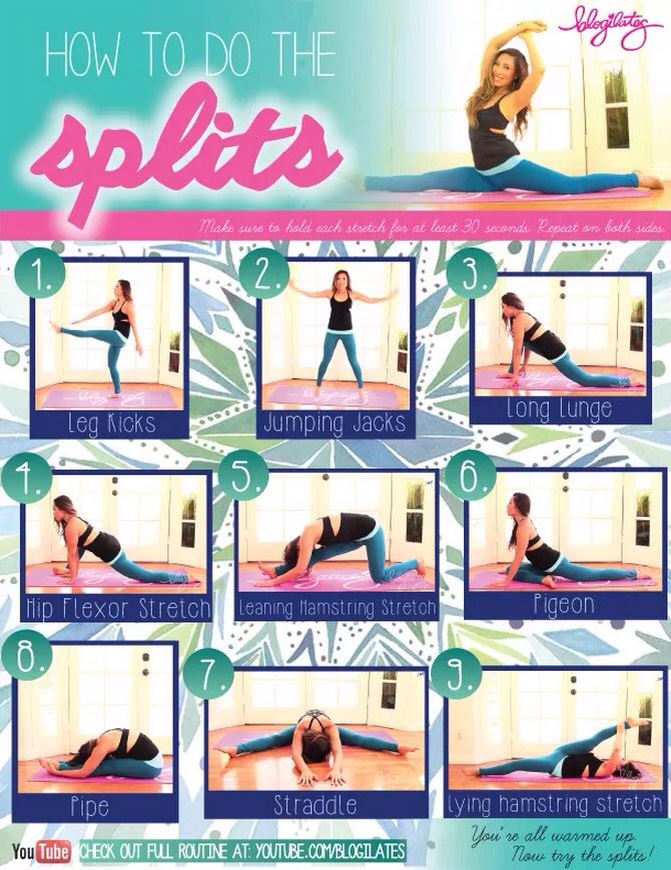
- Lunges with back foot on the bench.
Toned abs provide a powerful base for keeping the pelvis in a neutral position and also allows the gluteus maximus to work more efficiently when moving the body forward.
So one way to effectively “stretch” the hip flexors and eliminate excessive forward arching in the spine is to actively train the gluteal muscles. At the same time, it is very important to maintain mental concentration on the work of these muscles and feel a painful burning sensation.
If these three exercises don't work, try working harder on your abs and glutes to increase spinal stability.
In addition to the plank, it is advisable to use other exercises that are focused on resistance to external forces, such as bending or rotating the body under load.
When pumping the gluteal muscles, the most appropriate exercises in this case are the deadlift and the glute bridge. They will help strengthen the lower back and compensate for the weakness of the press during movements.